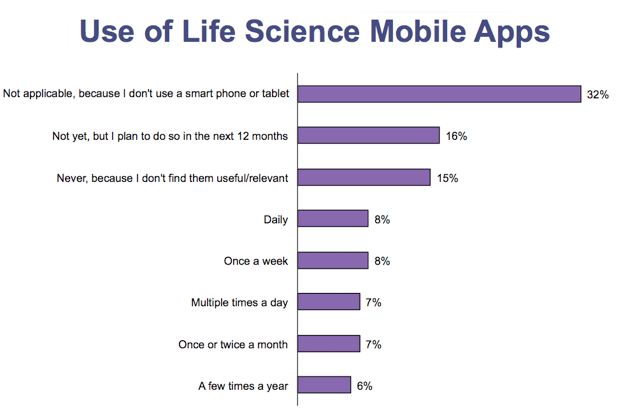Scientists and their Mobile Devices
Despite what Cap’n Kirk, Mr. Spock and the rest of the crew of the Starship Enterprise were known to have believed, there IS no final frontier. At least, not one that we can know of for sure. Look at all of the surprises we bump into when we think we’ve reached the end.
We saw this among a handful of life science industry executives when we did a market research report titled Selling Life Science Products on the Web: an Examination of Customer Usage & Preferences—way back in 1996, when the internet was still referred to somewhat frequently as the World Wide Web. (Even though they’re not exactly the same thing.)
Resistance to Digital Marketing
At the time, some of the major life science suppliers were not convinced of the value of an online marketing channel. One industry executive made this bold claim in the January 8, 1996 edition of The Scientist:
“Essentially [the web] is like putting a stack of newsletters outside the office door, closing the blinds, and three months later going out and finding all the newsletters gone and saying, ‘I hope somebody buys something.’”
One marketing consultant put it this way in the January 1996 edition of Marketing Tools:
“Right now, it’s just a whole lot easier for consumers to flip through printed pages than virtual ones, which often trickle with maddening slowness across the screen.”
Which, of course, at that time was probably true. But these attitudes often impeded the enthusiasm (and resources) needed to drive a company’s early entry into the digital marketing craze we see today.
Back again to 1996. In the February issue of BioTechnology in that same year, an information consultant said:
“Why should a biotechnology company develop and maintain a World Wide Web home page? The answer is obvious: significantly increased sales resulting from the instant international access of technical information about your product.”
In our 1996 report, we did a deep dive into this burning question: Should my company be on the web?
(Just in case you’re wondering, the answer we came up with was “yes.”)
The Next Frontier—Mobile Marketing
Fast forward to 2012.
Some innovative supplier companies are on the front end of deploying mobile marketing strategies, but most are once again asking the same question of this new platform. Is reaching out to scientists via mobile devices a good idea? And if so, is it too soon?
After all, many applications are too small to see on a smartphone. And how many grad students own tablets? But mostly, are scientists and/or their labs willing to invest in mobile devices and re-route the data infrastructure to change workflows, speed up data sharing and circulate information in a more organic way?
Even if the answer to this question is a resounding yes, life science tool manufacturers still need to make decisions about how to allocate resources in an outreach that has almost unlimited choices about how it’s going to look.
Take, for example, mobile apps. Scientists are creating a plethora of apps for their own use—and to share. Scientists are using apps to organize notes, calculate measurements and look up recipes for common molecular biology transactions, to name a few.
Granted, many of these apps are being developed by life science supplier companies. But at this point in time, mobile apps developed by suppliers are not widely proliferated.
This month, we are putting a microscope on scientists’ usage of mobile devices for their work, and how they would like to see suppliers reach out to them through their handheld devices. Stay tuned for more on this upcoming market report.
Here is an interesting finding about scientists’ current and planned use of mobile apps:






